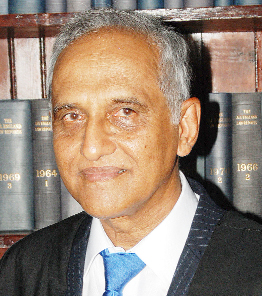Chartered accountant Christopher Ram believes the amount that Chinese bauxite company Bosai Minerals charges the Linden Electricity Company (LECI) for electricity supplied to the Linden community is exorbitant.
Ram has said that the Bosai plant uses more expensive fuel than the Guyana Power and Light Company (GPL) does, which may account for the higher prices. However, he remains unconvinced that this is enough to propel the cost to $56.6 per kilowatt hour (Kwh), which Bosai charges LECI. This, in his estimation, seems grossly expensive. “This is just generation costs,” Ram pointed out. He noted that GPL had a generation cost of about $30 per Kwh.

“One needs to see what goes into the costs and whether overhead costs are [included in the charges],” he further said. “If there are fixed costs associated with the dust collector then this cost should not be passed on to the consumers. It should bear the cost associated with the dust collector,” he added, referring to the recently installed equipment intended to reduce dust pollution generated by Bosai’s operations.
“The basis of the charges seems to be a total costs approach to financing. This may not be the most appropriate approach. A marginal pricing approach may be more relevant,” he said.
Ram is also interested in knowing who checks the statements of the company and whether these are separately reviewed to ensure that the community is not overcharged. “This amount that Bosai is charging seems expensive given that LECI has to bear all the cost of transmission,” Ram said.
Bosai has said that billing is done in compliance with the Power Sale and Purchase Agreement between Bosai Minerals, LECI and the Cooperative Republic of Guyana. It has not provided a detailed costing for power sold to LECI. The government’s plan for a phased ending of the power subsidy to Linden provoked weeks of protests in the town and resulted in the killing of three demonstrators by the police on Wednesday.
After operating at a loss in 2009, the Bosai Power Plant recorded profits over the last two years for power generation to Linden, which has received on average double the supply used by the company, according to Bosai.
An extract of an audit report released by the company last week showed that the power plant charges for the LECI over the last three years have been higher than the charges on the BMGG.
The report was released after the AFC called for Bosai to be held accountable for the government’s decision to rollback the electricity subsidy in Linden, resulting in higher tariffs.
That party, contending that the electricity is produced “principally” for Bosai’s use, noted that since the company buys fuel duty free, its cost of production has to be far lower than for GPL. AFC also accused Bosai of taking advantage of freedom from regulation by charging an exorbitant rate for the surplus electricity it sells.
According to the Bosai report, for 2009, 2010 and 2011, the company saw a loss of US$394,000 ($79,272,798), and profits of US$233,000 ($46,879,599) and US$195,000 ($39,233,999), respectively.
In 2009, it showed that the total power supplied to the community in Kilowatt hours was 44,677,084, for which LECI was charged US$8,606,298, in comparison with the 21,035,212 Kwh supplied to the BMGG, at a cost of US$4,082,199. For 2010, 46,882,943 Kwh of power were supplied to the community, at a cost of US$10,213,361, compared with the 21,336,030 Kwh supplied to the BMGG, at a cost of US$4,705,266. For last year, 46,472,970 Kwh of power were supplied to the community, at a cost of US$12,770,968, while 25,295,189 Kwh were supplied to the BMMG, at a cost of US$7,018,473.
The unit cost for power based on duty-free fuel for the period was US$0.20 in 2009, US$0.21 in 2010 and US$0.27 in 2011.
LECI purchases from Bosai and in turn services the Mackenzie end and the Linden Utility Services Coop Society Limited, which distributes to the Wismar shore.





